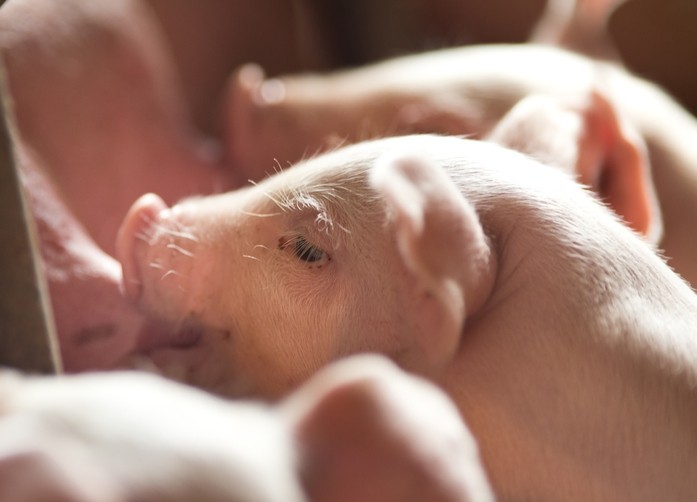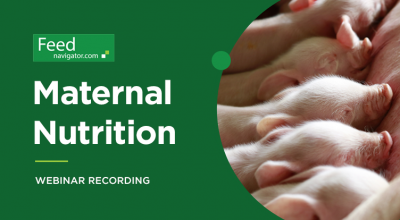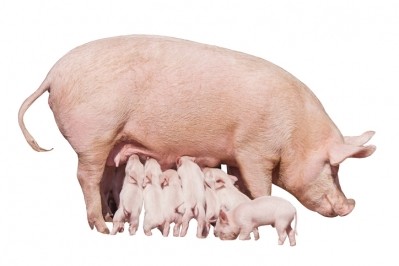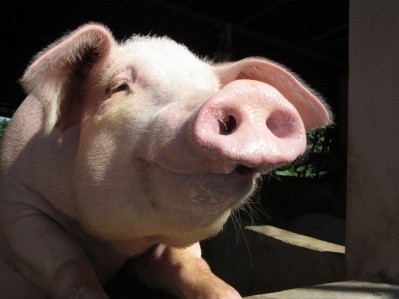Special Edition: Early Animal Nutrition
Denmark: Improved piglet survival focus of industry and academic tie-up

Peter Theil, senior researcher, department of animal science, Aarhus University Foulum, said he and his team are now collaborating with industry to disseminate and apply knowledge about this feeding strategy on commercial farms in Denmark; they will look to develop new feed products aimed at reducing total pig mortality up to weaning.
This collaborative project called Born2Live sees the involvement of Danish feed company, Vestjyllands Andel. It will start in January 2019 and will last for four years. The project has been awarded a 7.1m DKK (US$ 1.1m) grant by the Danish Ministry of Food and the Environment’s Green Development and Demonstration Programme (GUDP).
The Aarhus University team’s research so far has shown that more piglets can survive birth and the time thereafter if their mothers are fed closer to farrowing. The right feeding strategy results in a quicker farrowing and thereby stronger newborn piglets.
We spoke to Theil to hear about the background to the project.
He said his research team had studied colostrum production in sows for 10 years, prior to starting to dig deeper into the farrowing process.
“We carried out seven different experiments during those years. We focused on how much colostrum a sow can produce and how that can be improved by nutrition because we wanted to improve the survival rate of live born piglets.”
The team began to wonder, though, why there was such a variety in the farrowing process in individual sows, and whether there was a reason that some sows started fast and “spit out” piglets, while other sows appeared weak, with no obvious uterine contractions, during farrowing.
From research, they eventually determined that a substantial proportion of sows suffer from low-energy status at the onset of farrowing and that this negatively affects the farrowing process.
“During these hours that they farrow, we realized there is a risk they will run out of energy.”
In an experiment, the team surgically inserted a catheter into the uterus of a small population of sows and took samples when they were giving birth so they could measure which nutrients the uterus sows were utilizing during farrowing. “We could see that they were utilizing glucose and triglycerides, and that is really unusual for a sow to use triglycerides for oxidation. Normally, if they were in low energy balance, they would utilize nonesterified fatty acids (NEFA). The thing is triglycerides contain a small molecule that can be converted to glucose and we guessed that the reason that the sows take up triglycerides and not NEFA is because they lack so much glucose.”
From these surgically modified sows, they also took blood samples once per hour.
“We realized that when they measured plasma glucose, which is an indicator of energy status, that if too many hours passed after they had eaten their last meal, then their plasma glucose went as low as 2 millimoles per liter, and if you work with plasma glucose, you know that you have to have a level of 4-5 millimoles per liter.
“We only had a few sows [in that experiment] but, with such an extreme response, we realized we had a serious problem here. Based on that, we went back to our old colostrum experiments. We did not take any blood samples from those sows but we had recorded the time from when they were last fed and we had recorded the time they started farrowing. When we plotted this data we got a clear answer – if sows do not start farrowing within three hours of their last meal, they had a prolonged farrowing length. When we plotted the stillbirth rate against the time that passed from last meal until the start of farrowing, we saw that it affects the stillbirth rate as well, and it also increased the frequency of farrowing assistance.
“So, everything suddenly made a lot of sense when we plotted our data relative to the time from when the last meal was fed to that start of farrowing.”
It is only if the last meal exceeds three hours before farrowing that the sow runs out of energy, said Theil.
Importance of supplemented fiber
Studies on the beneficial effects of dietary fiber (DF) on sow reproductive performance are scarce, but this is an area or research for the Born2Live project as well.
Theil et al. have already investigated the impact of increased dietary fiber supply during the last two weeks of gestation on stillbirth rate, pre-weaning mortality, and total piglet mortality.
“In another experiment, we have studied the stillbirth rate where we used fiber or starch and we saw that we can clearly decrease the stillbirth rate by increasing the fiber.
“If we can prolong the energy uptake from the intestine during farrowing [when the sow cannot ingest another meal] through increasing the amount of fiber, it will have a positive impact on the stillborn rate.”
The Born2Live project, he explained, will look at how many meals would be optimal for sows, amount of feed per meal, as well as how many grams of fiber should be given to sows before parturition.
“We have an expectation that all three things can decrease the stillborn piglet rate.”
“We have to come up with different solutions depending on what is feasible in Danish pig production models and their feeding systems, which can rely on high tech or old-fashioned models.”
In addition, he said the partners will test various feed additives, and will develop new feed concentrate products, including a new wet feed product, to help ensure high blood sugar levels in the sow during farrowing.
Theil said the ultimate objective of the initiative is to reduce the proportion of stillborn piglets in Denmark by 1.5 percentage points and increase survival rates of live born piglets by 0.5 percentage points.















